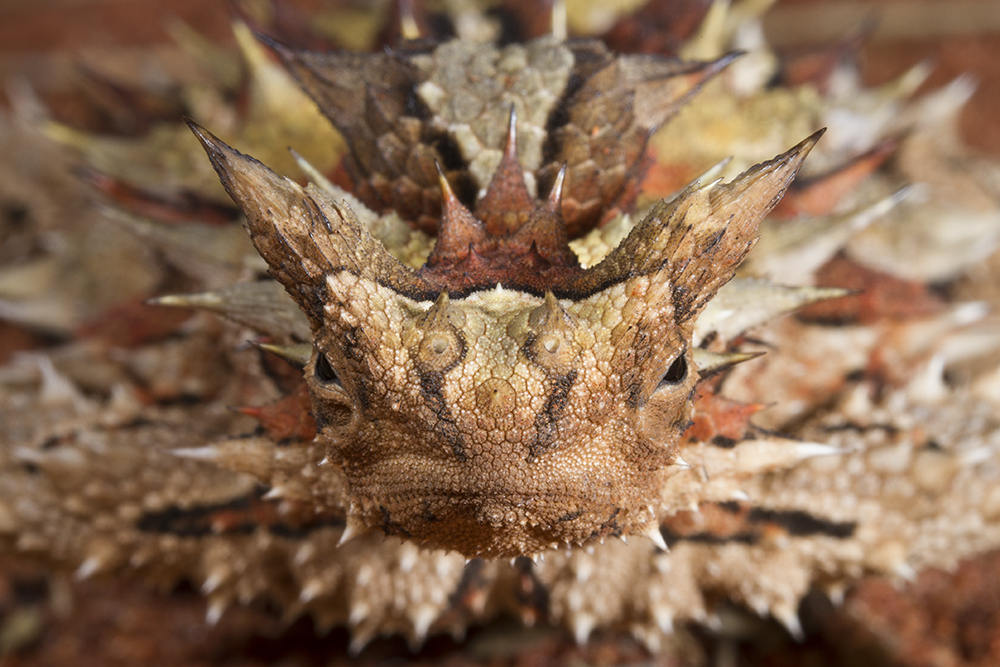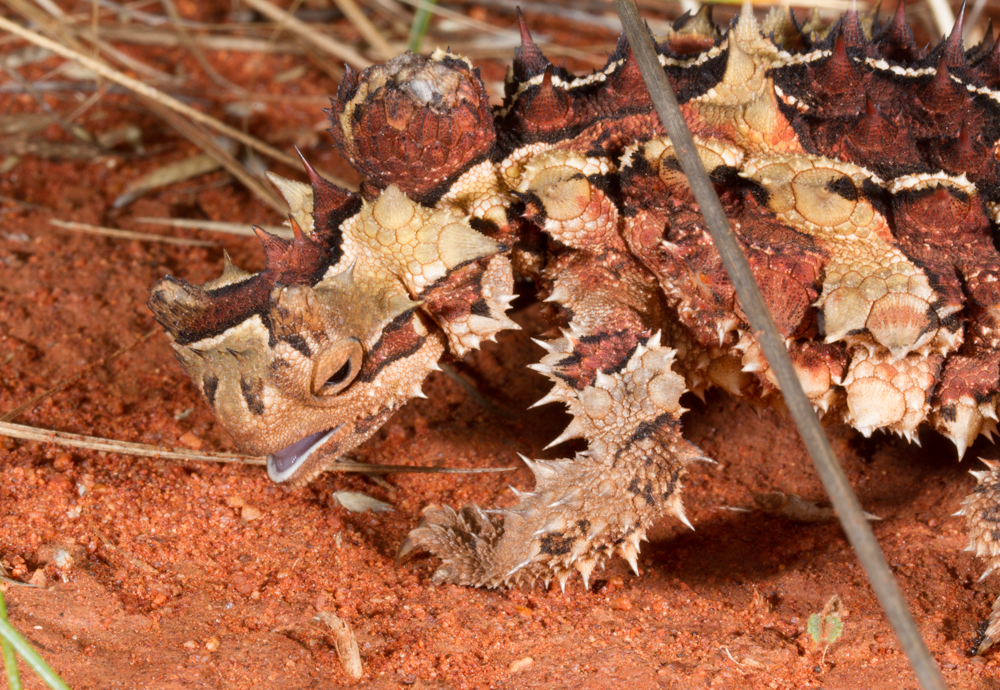Dancing with the Devil
Adaptation
The Moloch horridus, commonly known as the Thorny Devil, has
multiple adaptations, that allow it to survive in the arid deserts of
Australia. An interesting adaptation is the
method by which this lizard stores, captures, and drinks water. Through
numerous dissections of the Thorny Devil, scientists have determined that rainfall is captured by an intricate
design of layered scales all over the lizard’s body (Wade, et al., 2007).
Between each scale is a hinge joint that allows the lizard to collect
water and transport it to the back of its mouth through a tubular system
under its skin (Wade, et Al., 2007). Performing tongue movements allows
the lizard to create enough pressure to draw water towards the back of
its mouth (Wade, et al., 2007). In summary Moloch horridus uses
its surface area to generate capillary flow between its scales (Vesley,
et al., 2002).
scientists have determined that rainfall is captured by an intricate
design of layered scales all over the lizard’s body (Wade, et al., 2007).
Between each scale is a hinge joint that allows the lizard to collect
water and transport it to the back of its mouth through a tubular system
under its skin (Wade, et Al., 2007). Performing tongue movements allows
the lizard to create enough pressure to draw water towards the back of
its mouth (Wade, et al., 2007). In summary Moloch horridus uses
its surface area to generate capillary flow between its scales (Vesley,
et al., 2002).
The diet of the Thorny Devil consists only of different species of ants,
which have a relatively hard exoskeleton made of chitin. The Thorny
Devil has developed a specialized tongue much like the common anteater
that is fast and allows for quick capture of prey. Along with this
tongue a reduction of mandibular teeth is seen, because the teeth it has
are specialized for crushing the body for quick digestion. The amount of
nutrition in ants is not very high so another adaptation the thorny
devil has evolved with is a big stomach to gain the most nutrition it
can (Dewey, 2009).
 The Thorny Devil takes caution when observing its surroundings using
both sight and sensing vibrations (Dewey, 2009). When looking for a
meal this lizard is very patient and will wait until the meal comes to
him/her. The pace at which it moves is very slow, and in a rock step
type of motion.
The Thorny Devil takes caution when observing its surroundings using
both sight and sensing vibrations (Dewey, 2009). When looking for a
meal this lizard is very patient and will wait until the meal comes to
him/her. The pace at which it moves is very slow, and in a rock step
type of motion.
Another unique trait that the Thorny Devil possesses for encounters with
predators is the development of a “false head,” which is made from a
bony mass on the top of its real head (Dewey, 2009). When threatened by
a predator Moloch horridus will tuck its real head between its legs and
expose its false head and thorny body which makes it look bigger and
thus harder to swallow to the potential predator (Dewey, 2009). Another
defensive adaptation that these creatures have developed is that they
are covered in golden brown spots that make them almost impossible to
see in the desert soil that they reside in (Dewey, 2009).
The structures that this lizard possesses suit it well for its
environment. The combination of the scalar water transport system, its
camouflaged body, and its cautious personality make it a hardy
survivior. The impact it has on ant populations is not detrimental to the environment in Australia because the number
of ants is so high.
Click here to continue on to our Reproduction page or to go back to our Home page.
Moloch horridus